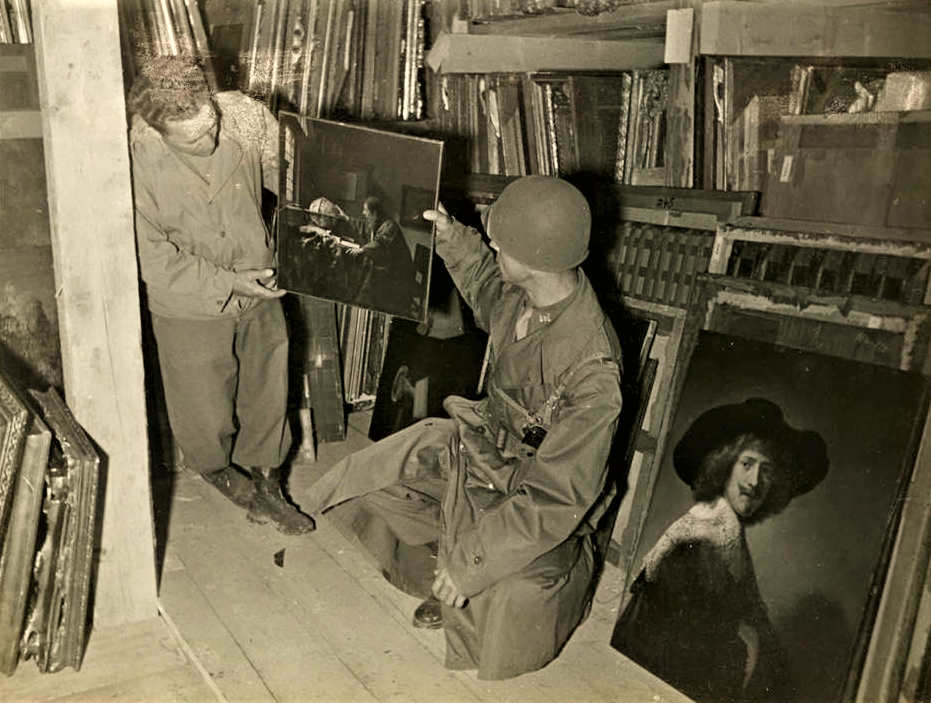This week we hear more from Ellen Perry, Professor of Classics at Holy Cross about sculptor Frederick Shrady:
Frederick Charles Shrady, the sculptor who created the bronze sculpture of Saint Martin of Tours in the foyer of Dinand Library, was born in New York in 1907. He was the son of another sculptor, Henry Merwin Shrady, whose most famous (and ambitious) work was the bronze group on the National Mall in Washington D.C. known as the Grant Memorial (Henry even incorporated a portrait of Frederick into that monument as a drummer boy).


The Grant Memorial was a labor of 20 years that was only finally dedicated 2 weeks after Henry Shrady’s death. Frederick was just a teenager at the time, but he grew up to study art in New York and Orleans, France; then art history at Oxford before he moved to Paris to live full-time. He lived there for 12 years and had established a solid reputation for himself as a painter. He also worked with the French underground, for which he was eventually awarded the Legion of Honor.
In June 1943, Frederick Shrady enlisted in the U.S. Army. He would join the Monuments, Fine Arts, and Archives (MFAA) division of the army, better known to contemporary moviegoers as the Monuments Men. In June 1945 he was part of the team of Monuments Men who rescued some thousands of paintings, sculptures and other works of art from the salt mines at Altaussee, Austria, where the Nazis were storing/hiding them apparently with the intention of building a museum in Linz. Regardless of their intentions, however, in the last days of the war, the salt mines and therefore the works of art were placed at risk first by Nazi loyalists and then by the prospect of advancing Soviet troops. The protection of these works from the Nazis was complicated business for which many locals get credit. But the rapid evacuation of the art before the Soviets arrived was largely the work of the Monuments Men.

While he was in Austria, Frederick Shrady met his future wife, Maria Louise Likar-Waltersdorff, who was serving as an interpreter for the MFAA. They married in 1946. Shrady converted to Catholicism and his artistic output thereafter was largely, though not exclusively, religious; Shrady also cast a bronze sculpture titled Fidelity, Bravery, Integrity—the FBI motto—which stands in the courtyard of the FBI Building but, for security reasons, is no longer accessible to the general public. Shrady’s first bronze (1949) was a portrait of the Jesuit philosopher and public intellectual Martin D’Arcy. Incredibly, that very first sculpture of Shrady’s was purchased by the Metropolitan Museum of Art. Many years later, Shrady would also become the first American artist to receive a commission from the Pope (John Paul II).

Novelist and historian Paul Horgan described Shrady’s overall style in a way that finds perfect application to the sculpture of Martin of Tours in Dinand Library:
….as he so often works in heroic scale, his powerful sense of the dramatic gesture to express an act or idea is always given to us through interplays or extreme tension between the flowing elements of his design. The parts seem to strive against each other in sweeping lines of almost choreographed gestures—and then to come together in the whole to effect a great act of release.
In June of 1969, the College of the Holy Cross conferred an honorary degree on Frederick Shrady. Six months later, just before Christmas, Father Swords was corresponding with Shrady about whether he might be willing to create a sculpture for Dinand Library. He wrote, “I know that the size of the bequest [$5,000] will limit the project, and I also realize that your time is very much in demand. However, I feel that an alumnus of Holy Cross in the person of your good self could bring to the work a feeling which an outsider would not have.” Swords evidently turned Shrady into a Holy Cross “graduate” shortly before calling on him as a loyal alumnus to do his part for the College.


